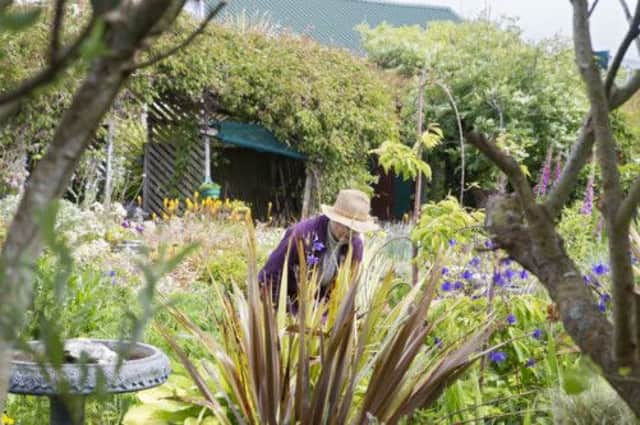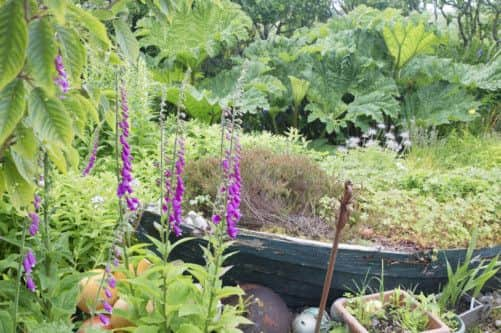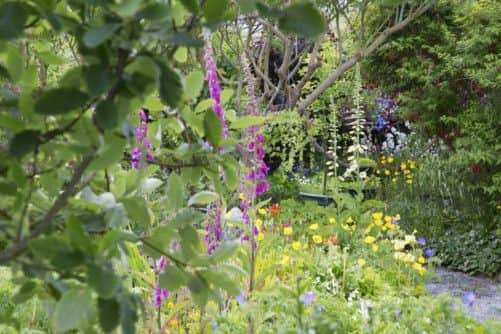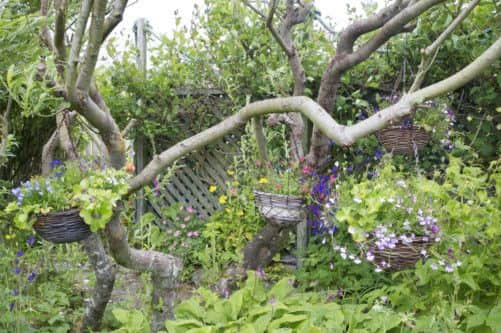A Shetland garden which triumphed against the odds


Driving down the hill it is easy to identify as it is the only cluster of green in an open landscape of sheep-grazed fields with the occasional group of ponies.
“When we came here just over 40 years ago, the sheep grazed up to the front door and the surrounding fences had collapsed,” says Margaret. But Shetland-born Margaret, who grew up on a farm, had always loved flowers and was determined to have a garden. Despite, or perhaps because of, the birth of the couple’s four children and now grandchildren, Margaret and William have not stopped tending the plot, which has been extended from a quarter to half an acre.
Advertisement
Hide AdAdvertisement
Hide AdMost of the work was done in the short summers, while the long winter evenings were reserved for reading about gardening. The accumulated knowledge kept Margaret abreast of current design and planting trends, which she adapted to suit the Shetland climate and salt-laden winds, “which can destroy clematis overnight”.


The couple also enjoyed visiting gardens for inspiration and Cornwall’s Eden Project was a particular favourite. There were regular visits to shows such as RHS Chelsea and Edinburgh’s Ingliston. “Everywhere we went we bought plants, the smallest one we could find.” The end result is a light, airy garden with an exuberant, slightly wild feel to it, attractive to wild life and punctuated with the occasional quirky object such as an upturned boat.
“I started with one piece of ground close to the house and then I added another piece,” Margaret says, explaining that the garden had to be made sheep and rabbit-proof from the start. For ease of identification and so that the children could always find her, the different areas were named according to their shapes.
As Margaret leads the way down one of the network of paths that thread in a circular movement through the garden she points out Boomerang, Horseshoe, Crooked Path and L Shape, the latter identified by the L-shaped wall that encloses it. There is also a beach and a small pond, and the most recent addition of Josie’s, named after their granddaughter who used to hide there.
Established by trial and error – “I believe in giving everything a chance,” Margaret says – the shelter belt consists mostly of sycamore, poplar, horse chestnut and different cherries. The temptation to grow acers was irresistible; they now flourish in the greenhouse alongside magnolia, camellia and wisteria. Outside shrubs, such as rhododendrons, tolerate the conditions, as does the scented, double pink-flowering Shetland rose, Rosa Rugosa.


Continuing down the path we brush past pink and blue geraniums, and glimpse flashes of orange crocosmia, larkspur, Japanese anemone and, surprisingly, blue Agapanthus – this year some are 6ft tall. Scent comes from container-grown lilies on the terrace close to the house and hostas do well Margaret says: “No bother with slugs, it’s too cold.”
Astilbe thrive and primula appreciate the damp conditions, while Shasta daisies stand tall in a sheltered spot and laburnum – this year’s lack of wind resulted in more than 100 blooms – rambles up walls and arches. The Russian vine, Fallopia baldschuanica, regarded elsewhere as a thug, here uses its clouds of fluffy white flowers to hide the compost area.
Learning how to place plants, Margaret admits, was challenging but she now feels she knows her garden better than she ever did. “I know how the wind blows though the garden, and where to place sitting areas to take advantage of the sun and watch the frogs in the pond,” she explains. She can now open up tiny vistas of Sandwick Bay without suffering the loss of other plants.
Advertisement
Hide AdAdvertisement
Hide AdIn the relatively wind-free conditions this year, there have been rewards and surprises. Violet-flowering Clematis President, she says, has flowered freely as have delphiniums, tucked into a spot at the side of the house. “This is the first year they have not been blown over by the wind.”


The heart of the garden is undoubtedly the open, gravel-strewn space directly in front of the house; from here your eyes are led up the foreground tapestry of plants and over the wind break to the bay beyond. Now half submerged by a sea of plants, it stands as a reminder of a culture that is the very essence of the Shetland Isles.
“This is one of the best places you could live,” Margaret says, turning back towards the house where a cup of tea awaits. “I never want to go away unless it is to visit another garden. There are plenty of heartbreaks, but you just have to carry on. We have spent a fortune, but we don’t have holidays.” You get the feeling there are no regrets, this garden boasts a depth of knowledge that gives it an established feel while reflecting the character, imagination and sheer hard work of its owners.
• Holla, Sandwick, Shetland is occasionally open under Scotland’s Gardens by appointment (scotlandsgardens.org)
Antoinette Galbraith and Ray Cox travelled to Shetland with Logan Air (loganair.co.uk)